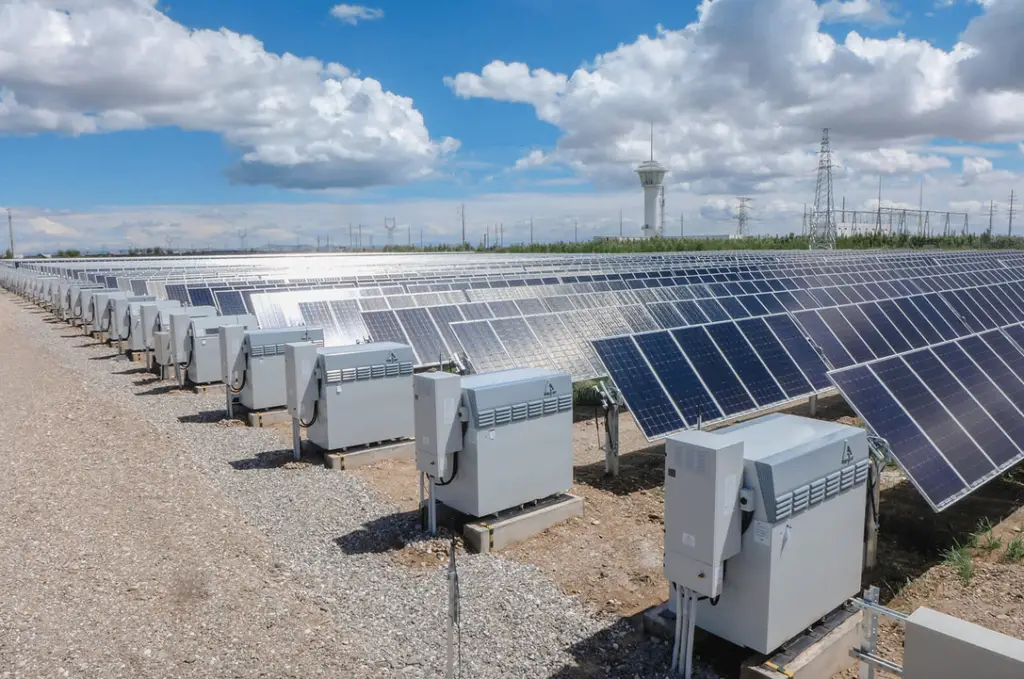Installing a solar battery allows you to store excess energy generated by your solar panels.
You can use this stored energy when the power goes out, during nighttime, or during high energy usage periods.
The typical lifespan of a home solar battery system ranges from 5 to 15 years.
Given that solar panel systems can last between 20 to 30 years, if you invest in a solar battery today, it’s likely you’ll only need to replace it once to coincide with the lifespan of your solar setup.
The longevity of your solar battery can be affected by several factors, which are critical to consider for maximizing its useful life.
What Factors Impact Solar Battery Longevity?
The longevity of a solar battery can be influenced by several key factors, including the solar battery’s type, cycle life, how deeply it’s discharged on a regular basis, the conditions it’s stored in, and how well it’s maintained.
Solar Battery Type
Different types of solar batteries have different expected lifespans:
Lead-Acid Batteries
Lead-acid batteries are among the oldest types of solar batteries. They usually last between 5 to 10 years, with a cycle life of around 1500 to 3000 cycles.
- Flooded Lead-Acid: Around 5-7 years
- Sealed Lead-Acid (SLA): About 7-9 years
- Absorbent Glass Mat (AGM): Approximately 7-10 years
These are often the cheapest but have the shortest lifespan and require regular maintenance, especially the flooded type.
Lithium-Ion Batteries
Dominating the market due to their longevity, these batteries can exceed 6000 cycles and have an expected lifespan of over 10 years.
They perform consistently for a long period, with a slight efficiency decrease towards the end of their lifespan.
- Lithium Iron Phosphate (LiFePO4): 10-15 years
- Lithium Nickel Manganese Cobalt (Li-NMC): 8-12 years
Lithium-ion batteries are more expensive but have longer lifespans, higher energy density, and generally require less maintenance.
Nickel-Based Batteries
- Nickel–Cadmium (NiCd): About 5-7 years
- Nickel–Metal Hydride (NiMH): Around 7-10 years
These batteries are less commonly used for solar applications due to their lower energy density and environmental concerns (especially for NiCd).
Flow Batteries
Flow batteries are newer and can last between 15 to 25 years.
They have a 100% depth of discharge, meaning they can use their full capacity without damaging the battery’s health.
Flow batteries are less common in residential settings but can be a good option for large-scale applications due to their long lifespan.
Environment
The location of a solar battery installation is crucial for its longevity:
- If a battery is exposed to harsh elements, it will likely degrade faster than one stored in a controlled environment, like a garage or a sheltered outdoor area.
- Solar batteries generally have a wide operating temperature range. For instance, the Pylontech US3000 works between 0°C to 50°C, but performance can decline if the temperature goes beyond this range.
Depth of Discharge (DoD)
The DoD indicates how much of the battery’s capacity can be used without harming it:
- Lithium-ion batteries often have a DoD between 80% to 95%. If a battery has a capacity of 13 kWh and a DoD of 90%, you can use up to 11.7 kWh safely.
Cycle Life
A key determinant of battery lifespan is its cycle life:
- This is the number of complete charge and discharge cycles a battery can undergo before its capacity is significantly reduced.
Maintenance
While solar batteries typically require minimal maintenance, some maintenance is necessary:
- Regular monitoring, which can often be done through an associated app, helps identify and address issues promptly.
- Some solar companies offer maintenance and monitoring services for an extended period, which helps ensure the solar battery system remains in optimal condition.
When to Replace Solar Batteries?
Like any piece of equipment, solar batteries have a finite lifespan and will eventually need to be replaced.
Here are signs that your solar battery is degrading and may need replacement:
Visible Damage
Regularly inspect your solar battery for any visible signs of wear and tear.
Damaged terminals or connections, signs of leaks, especially in lead-acid batteries, or any deformations like bulges or bumps on the battery’s surface are clear indicators of a problem.
Reduced Efficiency
If your battery is not holding as much charge as it used to, or if your devices and appliances take longer to charge, these could be signs that the battery’s efficiency is decreasing.
A diminishing capacity to store and deliver power is a common symptom of a battery nearing the end of its useful life.
State-of-Charge Checks
Conducting regular checks on your battery’s state of charge will help you monitor its health.
A battery that struggles to reach full charge or rapidly loses charge after being topped up is likely experiencing degradation.
By being aware of these indicators, you can plan for a battery replacement at the appropriate time, ensuring that your solar energy system continues to function effectively.








